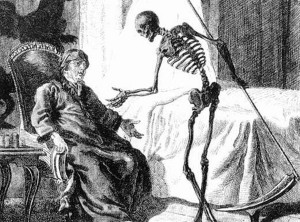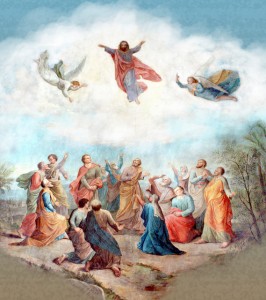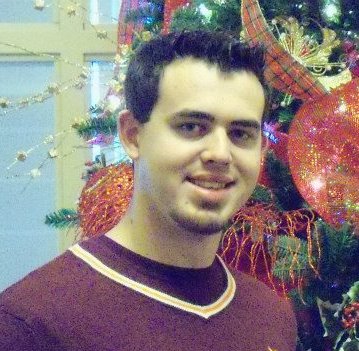 When confronted with mortality, humans face the possibility of experiencing a significant amount of terror. Interestingly, many times, people are able to avoid this terror and actually enjoy the mortality themes that are presented. Consider the horror movie industry. To illustrate, Paranormal Activity (Blum & Peli, 2007) brought in $19,617,650 on its opening weekend alone (IMDB, n.d.). Further, consider the timeless horror classics such as Friday the 13th (Geiler & Cunningham, 1980) and Halloween (Hill & Carpenter, 1978) that are full of themes of death. Why do we enjoy these anxiety provoking situations? Research into Terror Management Theory (TMT; Greenberg, Pyszczynski, & Solomon, 1986; Greenberg, Pyszczynski, Solomon, Rosenblatt, Veeder, Kirkland, & Lyon, 1990; Solomon, Greenberg, & Pyszczynski, 1991) suggests a possible explanation for this perplexing phenomenon. Humans engage in several cultural worldview defense mechanisms when cognizant of their own mortality in order to shield against the terror that is associated with it. More specifically, people observe their worldviews more strongly in order to give themselves a degree of self-purpose to combat the adverse effects that thoughts of their own mortality have on their well-being (Solomon et al., 1991). Further, religion has been found to be a strong buffer for death anxiety because it not only gives people the self-purpose inherent in successful death awareness coping, but it also gives followers a literal immortality in an afterlife (Bos et al, 2012). The following paper describes the role that religion plays in TMT and provides a possible explanation as to why it is able to buffer anxiety.
When confronted with mortality, humans face the possibility of experiencing a significant amount of terror. Interestingly, many times, people are able to avoid this terror and actually enjoy the mortality themes that are presented. Consider the horror movie industry. To illustrate, Paranormal Activity (Blum & Peli, 2007) brought in $19,617,650 on its opening weekend alone (IMDB, n.d.). Further, consider the timeless horror classics such as Friday the 13th (Geiler & Cunningham, 1980) and Halloween (Hill & Carpenter, 1978) that are full of themes of death. Why do we enjoy these anxiety provoking situations? Research into Terror Management Theory (TMT; Greenberg, Pyszczynski, & Solomon, 1986; Greenberg, Pyszczynski, Solomon, Rosenblatt, Veeder, Kirkland, & Lyon, 1990; Solomon, Greenberg, & Pyszczynski, 1991) suggests a possible explanation for this perplexing phenomenon. Humans engage in several cultural worldview defense mechanisms when cognizant of their own mortality in order to shield against the terror that is associated with it. More specifically, people observe their worldviews more strongly in order to give themselves a degree of self-purpose to combat the adverse effects that thoughts of their own mortality have on their well-being (Solomon et al., 1991). Further, religion has been found to be a strong buffer for death anxiety because it not only gives people the self-purpose inherent in successful death awareness coping, but it also gives followers a literal immortality in an afterlife (Bos et al, 2012). The following paper describes the role that religion plays in TMT and provides a possible explanation as to why it is able to buffer anxiety.
TMT Overview
Research into TMT is based primarily on the works of Ernest Becker (1962; 1973; 1975) in which a need for self-esteem allows us to think in self-reflective, symbolic, and temporal thought. Although this is evolutionarily adaptive, it also causes several problems associated with this type of thought. For example, humans have the ability to contemplate their purpose in life and reason for existing. Also, people can surmise that the world is an uncontrollable place and that we could cease to exist at any time. More specifically, we can anticipate that we will ultimately die.
In order to shield against the terror that is associated with this idea of the world, humans began to develop a sense of culture that allowed us to see the world as a predictable place of permanence and order. Each culture also provides a way to surmise the creation of this “just” world and a way to achieve immortality by living a life that is good and meaningful. This suggests the importance for self-esteem. Being cultural animals, we can assign a value to ourselves based primarily on whether or not we satisfy the cultural requirements for being good. By increasing our self-esteem, we believe that we are living a meaningful life that is deemed culturally good. Due to this, we can ultimately “deny” mortality and the terror that is associated with it. The denial of this mortality allows us to deny our creatureliness and further allows us to separate ourselves from the social animals that do not possess culture. By believing that we are good, we diminish terror and gain a degree of immortality because we live in a just world (Greenberg et al., 1986).
Religion’s fulfillment of TMT
It is important to note that when discussing religion’s role in TMT, most research has been conducted on Christianity and will thus be the primary subject of the current paper. Of the different worldview defense mechanisms, religion has been found to be very effective in mitigating the death anxiety that mortality salience evokes. When faced with their own mortality, religious people rely on teachings from their faith in order to buffet the negative aspects associated with the perception of death (Bos et al., 2012). For instance, consider the Biblical teachings paramount to Christianity. According to Romans 13:1 (New Revised Standard Version), God is in control of every aspect of life. Considering that God is viewed as a “just God” (2 Thessalonians 1:6, New Revised Standard Version), death anxiety can be mitigated by believing that God is in control of every aspect of life. So long as one believes in God and asks his forgiveness (John 3:16, New Revised Standard Version), the teachings suggest that there is no need to worry about invoking God’s wrath. TMT research corroborates this conjecture. Because the world and God are viewed as just, believers do not worry that they will be punished and therefore gain a figurative degree of symbolic immortality so long as they follow and uphold these beliefs (Greenberg et al., 1986; Pyszczynski, Greenberg, Solomon, Arndt, & Schimel, 2004).
 Possibly the strongest defense against death anxiety as it relates to religion is the concept of an afterlife. When faced with thoughts of death, religion gives people an alternative to the terror that is associated with nonexistence after death (Pyszczynski et al., 2004). When considering Christianity, Heaven is considered to be a wonderful place where “death will be no more; mourning and crying and pain will be no more” and beautiful “as a bride adorned for her husband” (Revelation 21:2 – 6, New Revised Standard Version). Further, by following the teachings of Christianity, any believer can be part of this kingdom after they have died. Considering that the primary reason that death anxiety manifests is due to the fear of nonexistence (Greenberg et al., 1986), this literal afterlife should successfully mitigate this anxiety. The concept of Heaven allows believers to have a place where they will exist and be rewarded for their good behavior and belief after they have died, ultimately alleviating death anxiety.
Possibly the strongest defense against death anxiety as it relates to religion is the concept of an afterlife. When faced with thoughts of death, religion gives people an alternative to the terror that is associated with nonexistence after death (Pyszczynski et al., 2004). When considering Christianity, Heaven is considered to be a wonderful place where “death will be no more; mourning and crying and pain will be no more” and beautiful “as a bride adorned for her husband” (Revelation 21:2 – 6, New Revised Standard Version). Further, by following the teachings of Christianity, any believer can be part of this kingdom after they have died. Considering that the primary reason that death anxiety manifests is due to the fear of nonexistence (Greenberg et al., 1986), this literal afterlife should successfully mitigate this anxiety. The concept of Heaven allows believers to have a place where they will exist and be rewarded for their good behavior and belief after they have died, ultimately alleviating death anxiety.
One additional consideration regarding religion’s role in TMT is that of belonging. Symbolic immortality can be achieved by being part of something that is perceived as larger than oneself. Simply by identifying with a religion, people are shielded from some of the anxiety associated with death awareness (Pyszczynski et al., 2004). Generally, this sense of belonging is achieved through adherence to the religious tenets suggesting additional importance in following the religious beliefs in order to better shield against death anxiety (Dechesne, Pyszczynski, Arndt, Ransom, Sheldon, van Knippenberg, & Janssen, 2003).
Religious Reinforcement
As has been suggested, religious adherence is a successful method to mitigate death anxiety. Early research in TMT suggests that people react positively when others uphold their cultural worldviews and react negatively when they are violated. Further, this behavior reinforces the person’s worldview belief. Any person or belief that goes against these worldviews are considered a hazard to the belief’s validity and are reacted against negatively (Rosenblatt et al., 1989). Subsequent research on TMT and religion provides increased support for this finding. Christians have been found to react strongly against people and beliefs that go against the basic tenets of the religion. More specifically, they react very defensively against alternate worldviews. This has been postulated to be due to the importance that this religion plays in self-identification (Bos et al., 2012). Due to these defenses, Christians and people in general are more likely to react with hostility to people that hold different worldviews (Greenberg et al., 1990).
Conclusion
In regards to TMT, religion can be used to successfully mitigate the anxiety that is associated with death awareness. Primarily, adherence to the tenets of religion allows the believer to achieve both a symbolic and literal immortality (Bos et al., 2012). This dual function of religion may give one possible explanation as to why some religions are more widespread than others. Perhaps the larger religions provide more anxiety buffering defenses than do the smaller ones by providing more prominent tenets to follow and a more believable afterlife.
References
- Becker, E. (1962). The birth and death of meaning. New York, New York: Free Press.
- Becker, E. (1973). The denial of death. New York, New York: Free Press.
- Becker, E. (1975). Escape from evil. New York, New York: Free Press.
- Bos, K., Doosje, B., Loseman, A., Laarhoven, D., Veldhuizen, T., & Veldman, J. (2012). On shielding from death as an important but malleable motive of worldview defense: Christian versus Muslim beliefs modulating the self-threat of mortality salience. Social Cognition, 30(6), 778–802.
- Blum, J. (Producer), & Peli, O. (Director). (2007). Paranormal Activity [Motion Picture]. United States of America: Paramount Pictures
- Dechesne, M., Pyszczynski, T., Arndt, J., Ransom, S., Sheldon, K., van Knippenberg, A., & Janssen, J. (2003). Literal and symbolic immortality: The effect of evidence of literal immortalityon self-esteem striving in response to mortality salience. Journal of Personality and Social Psychology, 84(4), 722-737.
- Geiler, A. (Producer), & Cunningham, N. (Director). (1980). Friday the 13th. United States of America: Paramount Pictures.
- Greenberg, J., Pyszczynski, T., & Solomon, S. (1986). The causes and consequences of a need for self-esteem: A terror management theory. In R.F. Baumeister (Ed.) Public Self and Private Self (p. 189 – 212). New York, New York: Springer-Verlag.
- Greenberg, J., Pyszczynski, T., Solomon, S., Rosenblatt, A., Veeder, M., Kirkland, S., & Lyon, D. (1990). Evidence for terror management theory II: The effects of mortality salience on reactions to those who threaten or bolster the cultural worldview. Journal of Personality and Social Psychology, 58(2), 308-318.
- Hill, D. (Producer), & Carpenter, J. (Director). (1978). Halloween. United States: Compass International Pictures.
- IMDB (n.d.). Paranormal Activity Box Office. Retrieved October 11, 2014. Retrieved from
- http://www.imdb.com/title/tt1179904/business
- Pyszczynski, T., Greenberg, J., Solomon, S., Arndt, J., and Schimel, J. (2004). Why do people need self-esteem? A theoretical and empirical review. Psychological Bulletin, 130(3), 435-468.
- Rosenblatt, A., Greenberg, J., Solomon, S., Pyszczynski, T., & Lyon, D. (1989). Evidence for terror management theory: I. The effects of mortality salience on reactions to those who violate or uphold cultural values. The Journal of Personality and Social Psychology, 57(4), 681-690.
- Solomon, S., Greenberg, J., & Pyszczynski, T (1991). A terror management theory of social behavior: The psychological functions of self-esteem and cultural worldviews. Advances in Experimental Social Psychology, 24, 93-159.



